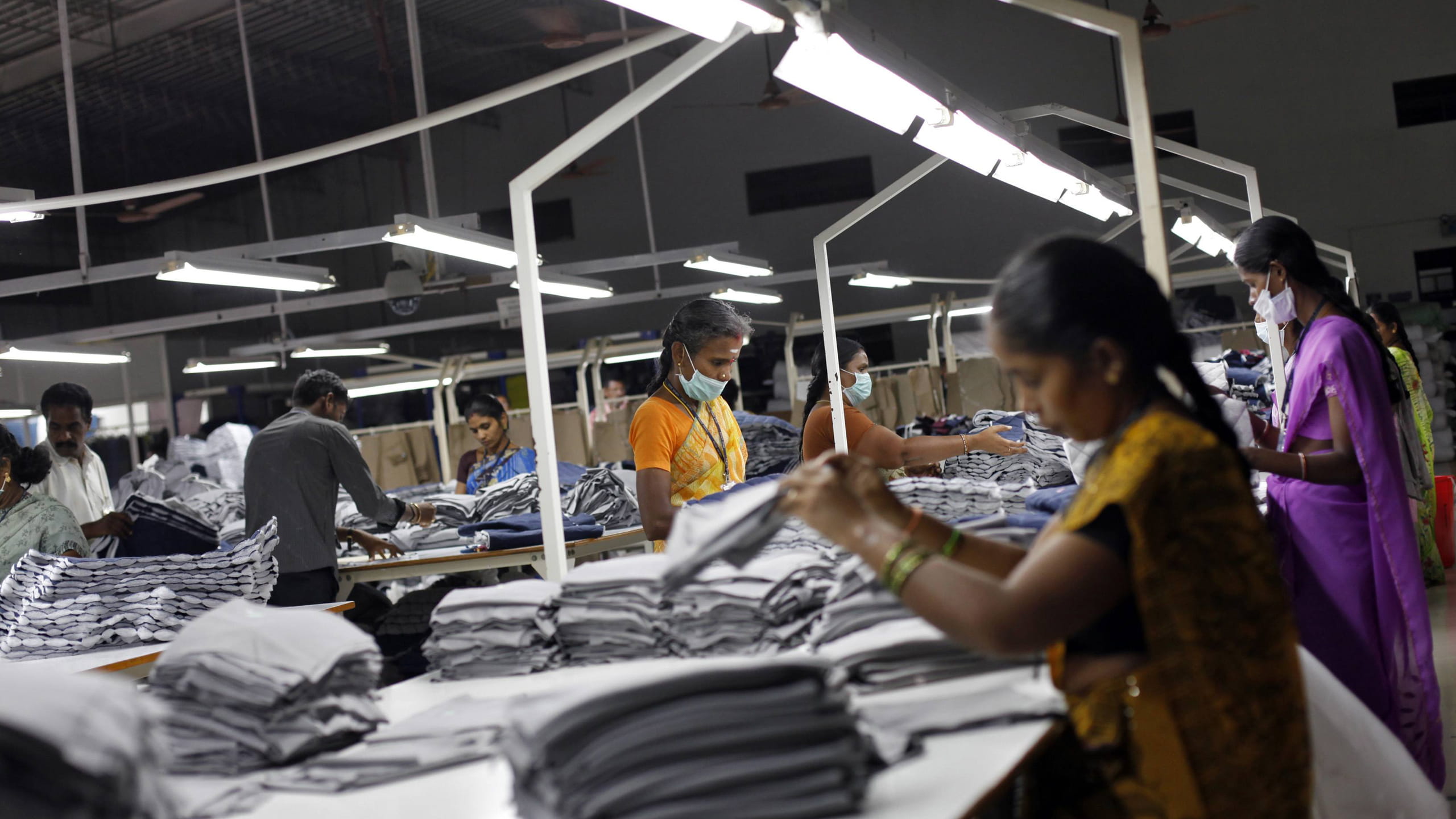- Introduction
Unless you’ve been sleeping on our national economy for the past few years or so, you’ll definitely know that the Indian textile industry has been a resounding turnaround story. Importance of Textile Industry is known to almost everybody, In fact only industry besides agriculture to have provided skilled and unskilled labor to a substantial population. It employs employs 5.1 cr people directly and over 7 Cr indirectly and indirectly. Even today, it still stands tall as the 2nd largest employment providing sector in India.
Some Economic Data Points Regarding Textile Industry
- During FY 2018, Indian Textile exports were at US$ 39.2 bn in FY18 and they are projected to increase to US$ 82.00 bn by 2021.
- Indian textiles industry is currently at US$ 150 bn and is projected to reach US$ 250 bn by 2019.
- India’s textiles industry contributes 2% to Indian GDP.
- India’s textiles industry employed more than 45 mn people in FY18.
- India’s textiles industry contributed 15% to export earnings of India in 2017-18.
- Existence of end to end value chain within the country — finished goods, fabrics, yarns and fibre.
- Indian Textile Industry – A historical perspective
When putting into perspective the various struggles the textile industry had to face in a country like India, one cannot ignore the vast evolution of it. To understand this turnaround story we will have to go back to prehistoric era. You should not be surprised when we say that India has been a textile-savvy country since the dawn of Harappan civilization. Archaeological experts have found that citizens of the Harappan civilization were aware of cotton spinning and weaving techniques even then. This is four thousand years ago! References of this awareness were found in Vedic literature which is factually seen as relevant for various instances in Indian history. Textile trade too was found in India during the early centuries. This took place when remains of a particular fabric which originated in the state of Gujarat, was found in Egypt. The finding itself is proof of India’s textile trade back then. Large swathes of India’s reputed silk were transported to China through the silk route thousands of years ago. The genesis of the colonial era, marked the beginning of slowdown and eventual decline of the textile industry. But it soon saw its uprising once again during the nineteenth century. Soon, the country’s first textile mill was established in the year 1818 in Calcutta. With this, began the modern era of textiles in India. By the end of the second half of the century, there was an approximate total of 178 mills established. The industry took a massive hit when it was hit by the great famine which led to a lot of big mils to be closed down.
- Indian Textile Industry – SWOT Analysis
In order to take a “deep dive” into the world of the Indian textile industry, we must first acknowledge its strengths and weaknesses. Like any industry of the world that has existed to date, the textile industry has a lot of strengths that have contributed to the country’s economic value. However, in the same way, it also has a lot of weaknesses that should be addressed.
Strengths
- A growing domestic market to look forward to.
- Prominent position in the value chain.
- Skilled labor at low-cost value.
- Availability of raw material in local market.
Weaknesses
- Outdated technology
- Low levels of productivity in comparison to other countries and industries
- Lack of access to infrastructure, capital and power
- Fragmented Nature of Industry
- Disconnect between the cotton growing areas and the areas where cotton is processed into cloth
Opportunities
- High labor costs abroad
- Unlimited market access
- Growing domestic market
- Increased adoption of standardized products
Threats
- Inflexibility on interest rates
- Abrupt rise of labor wages
- Emergence of markets like Bangladesh and Vietnam which are huge threats
- Absence of protections under WTO
- Implementation of global compliance standards like OHSAS – 18000, SA – 8000 and ISO – 14000 standard which will be a lag on competitiveness of Industry
The textile sector comprises 80 per cent of Ministry of Micro, Small and Medium Enterprises (MSME) players. They need flexible labor laws and a skilled workforce as the sector itself lacked the structural know how to bring about these initiatives, themselves. Let us focus on the bright side of things first. Probably the most appreciated aspect of the industry is the number of raw materials it has. This might not seem like a huge deal at first, but the abundance of raw materials actually the industry to breathe and not put too much pressure on costs. It helps control it within the sector. Skilled labor also faces fewer costs. India’s textile industry also stands steady in the value chain as a sector itself. Compared to various other textile-driven neighboring countries such as Bangladesh and Sri Lanka, who have been introduced as ‘garment countries’, India has a prominent position. The industry also has a growing domestic market which lessens the risks involved and increases the competitive aspect. While all these elements are considered good and give the textile industry a chance to shine, it has faced tons of challenges and has risen to the top after several attempts. India’s textile world is extremely fragmented. As mentioned above, it is divided among sectors and is dominated by the existing unorganized sector as well as other small industries. What is the influence of a fragmented industry? Well, for instance, it denies the possibility to expand on a global scale.
- Factors behind revival of Textile Industry Post-2005, the industry seemed to have faced the most struggles. There were some opportunities that needed to be put into consideration. The challenge was to make India focus more on product development. This also meant more specialized fabrics being brought in, using CAD to increase the design capacity of the industry, and an increase in trend focus so as to enable proper growth in the future. The revival story can be directly attributed to a slew of government reforms like.
- Improved Access to Credit
- Tax Incentives
- Labor Reforms
- Improved Access to Power
- Access to New Market Geographies
-
- Improved Access to Credit – Rs 1300 cr disbursed as part of Samarth Scheme and Rs 6000 were allocated as a downstream package. This coupled with state wide incentives and increase of import duties on textile was a big positive for Textile Industry
- Tax Incentives – A tax scheme to give rebates on state and central taxes that effectively made exports of textile commodities zero-rated.
- Labor Reforms – Under Pradhan Mantri Rojgar Protsahan Yojana as of January 2019, 1,24 lacs establishments have availed this scheme where 12% contribution to EPF is made by Government and it provides a sense of social security to labor associated with textile industry and formalization of labor force as well.
- Improved Access To Power – Ministry of Textiles along with Ministry of Power launched SAATHI scheme to improve access of power loom units. Under this scheme, EESL will procure energy efficient power looms, kits and motor equipment which will be provided to Small Power loom units at zero upfront cost. This will not only improve efficiency in this industry but also improve energy savings and thus reduce operational costs. It is expected that these savings will pay for cost incurred by EESL within 5 years.
- Access to New Market Geographies – As part of ‘Look East’ doctrine, new markets geographies in Korea, Japan were identified. Integrated Market plans for these geographies were set in motion.
About the Author
Sunil Kumar Gupta is an entrepreneur par excellence, philanthropist and a great visionary. He is the Leader of Indo European Business Forum (IEBF) and also the Founder Chairman of SARC & Associates, Chartered Accountants and SARC Foundation and Life Trustee of Rashtriya Antyodaya Sangh, a Public Charitable Trust. He has over 32 years of experience in diverse fields such as Corporate planning, Financing, Taxation, Banking, Education, Investments, Oil & Gas and in project implementations. He is a Fellow Member of the Institute of Chartered Accountants of India (ICAI), Life Member of Indian Council of Arbitration and Full Member of the Institute of Certified Public Accountants of Uganda (CPA-U).







0 Comments